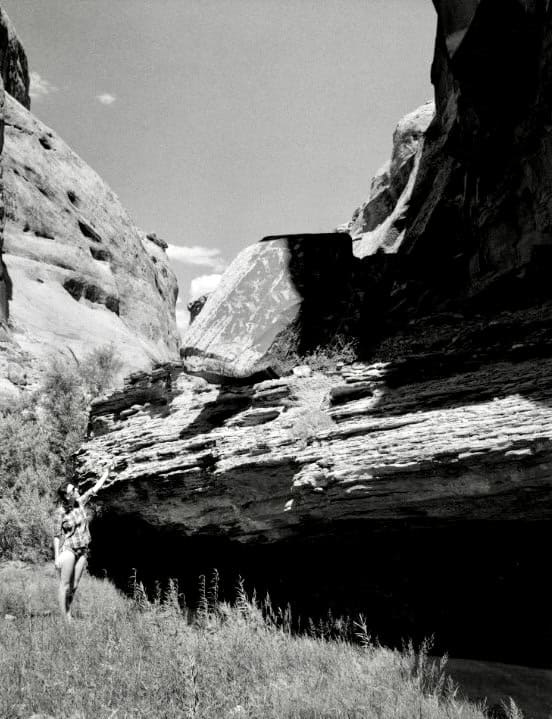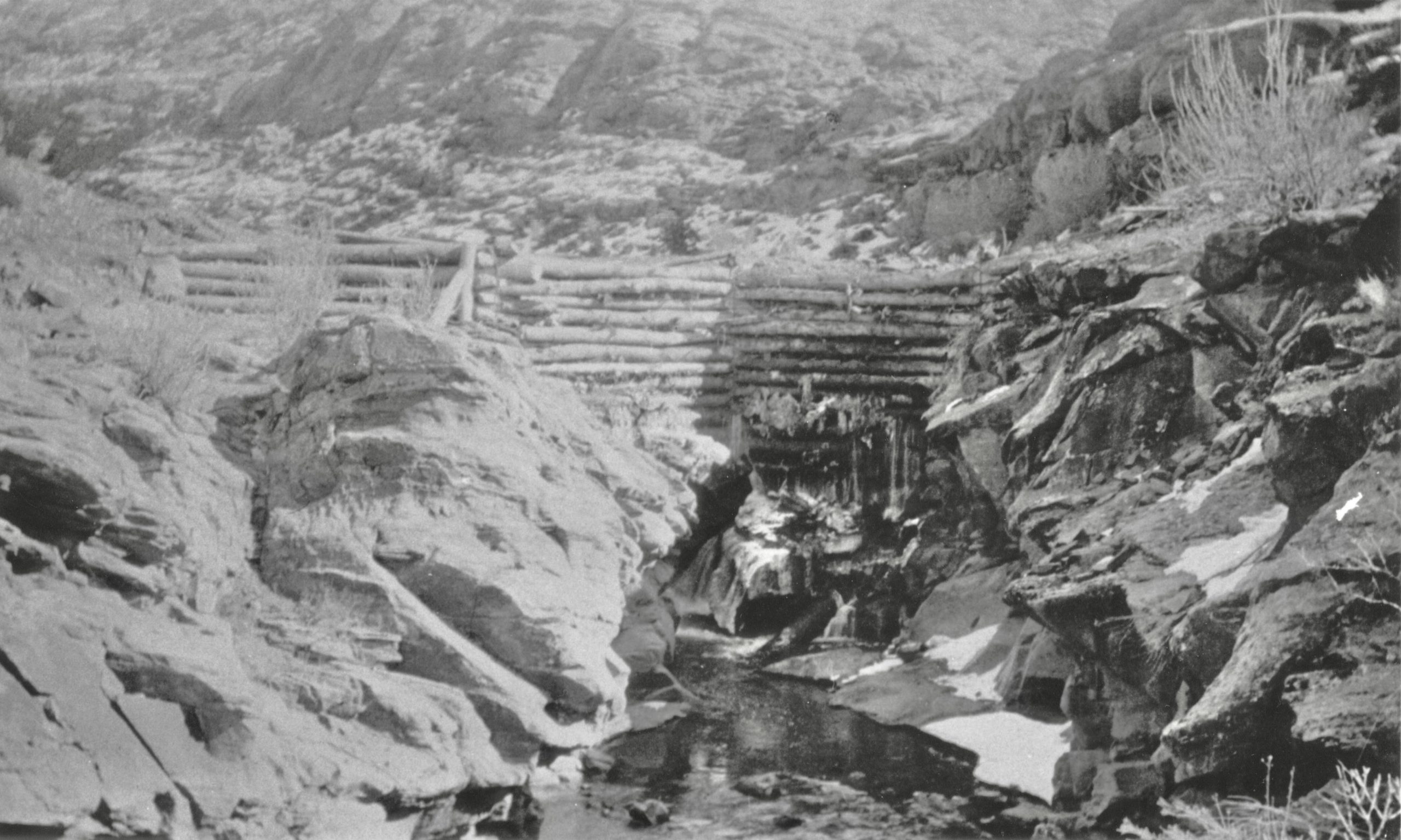Some information may be outdated.
Mill Creek has long played a powerful role in Moab’s history as a life-giving water source, but sometimes as a destructive force during flash floods. As Moab navigates the aftermath of recent flooding along Mill Creek, exploring history illuminates the ways that Moabites have interacted with Mill Creek over time. Stories and photographs in the Moab Museum’s collection help illustrate peoples’ long relationship to the creek that runs through town today.
Petroglyphs and pictographs on canyon walls provide evidence of thousands of years of human history in Mill Creek. The creek has provided for numerous cultural groups over time, serving as a source of water, a place to live, a place to hunt, and a source of plants and other materials.

Euro-American settlers chose to settle here in the Moab Valley in large part due to the availability of Mill Creek’s water. Early settlers of the region dammed the stream to operate mills, irrigate crops, and eventually generate electricity. The town sprang up along the creek’s banks, its residents taking advantage of the precious water and rare shade in the arid environment.
Numerous photographs from the museum’s collection provide a window into different chapters of Mill Creek’s human history and a reminder that people have been navigating the dual benefits and challenges of living alongside it for a long time.
The Moab Museum is dedicated to sharing stories of the natural and human history of the Moab area. To explore more of Moab’s stories and artifacts, find out about upcoming programs, and become a Member, visit www.moabmuseum.org.
Appreciate the coverage? Help keep local news alive.
Chip in to support the Moab Sun News.





